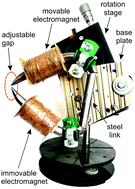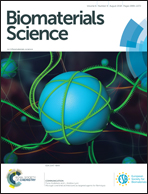Transfer of cells with uptaken nanocomposite, magnetite-nanoparticle functionalized capsules with electromagnetic tweezers†
Abstract
Targeted cell delivery via magnetically sensitive microcapsules of an applied magnetic field would advance localized cell transplantation therapy, by which healthy cells can be introduced into tissues to repair damaged or diseased organs. In the present research, we implement magnetically sensitive cells via an uptake of microcapsules containing magnetic nanoparticles in their walls. As is shown in an example of the MA-104 cell line, the magnetic polyelectrolyte multilayer capsules have no toxicity effect on the cells after internalization. Microscopy methods have been used to evaluate the uptake of capsules by the cells. Magnetically sensitive cells are retained in the capillary flow when the magnetic gradient field is applied (<200 T m−1), but they proliferate at the site of retention for several days after the magnet is removed. As an example of cell manipulation, we have demonstrated a novel methodology for cell sheet isolation and transfer using cells impregnated with magnetic microcapsules. A weak enzyme treatment is used to facilitate tissue engineering assemblies by cell monolayer deposition. This type of cell monolayer assembly has provided a 3D tissue engineering construction using an externally applied magnetic field, which is modelled in this study. The approach presented in this work opens perspectives for preclinical studies of tissue and organ repair.



 Please wait while we load your content...
Please wait while we load your content...